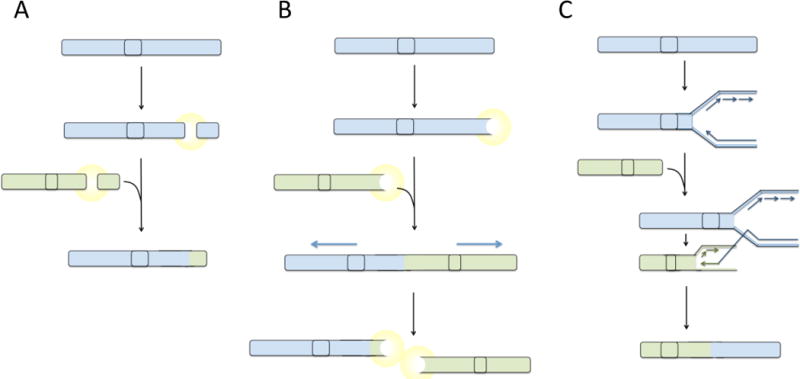Fig 2. Pathways to translocation.

(A) Balanced reciprocal translocations are hypothesized to form as a consequence of fusion of two double-strand breaks that arise in the same cell. Following appearance of double-strand breaks, a signaling pathway is activated, which leads to ligation of the free DNA ends mediated by factors of the non-homologous end-joining pathway. (B) Telomere uncapping or attrition generates a DNA double-strand break response, potentially leading to fusion of telomeres generating end-to-end fusions. During anaphase, dicentric fusion chromosomes are pulled apart leading to the formation of translocations and double-strand breaks. Broken chromosomes act as substrates for additional rounds of fusion and breakage, generating increasingly complex translocations. (C) Hypothetically, translocations could arise by a replication-based mechanism by ‘switching’ of the DNA replication machinery to a site on a different chromosome with some degree of sequence homology to the original template. Extension of the replication fork at a site on a different chromosome would lead to a composite daughter strand being produced, containing sequence from two chromosomes. This composite chromosome would appear as a translocation. Highly complex translocations could be generated by multiple template switching events, generating an aberrant chromosome containing sequence from several different parts of the genome.
